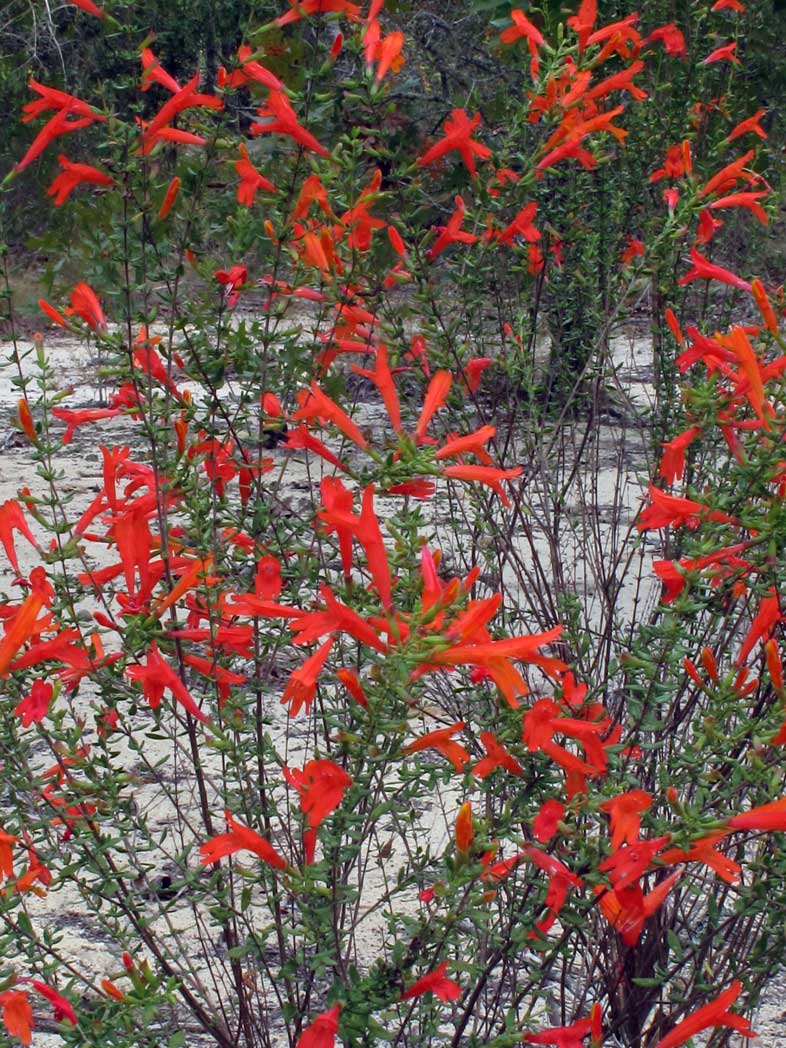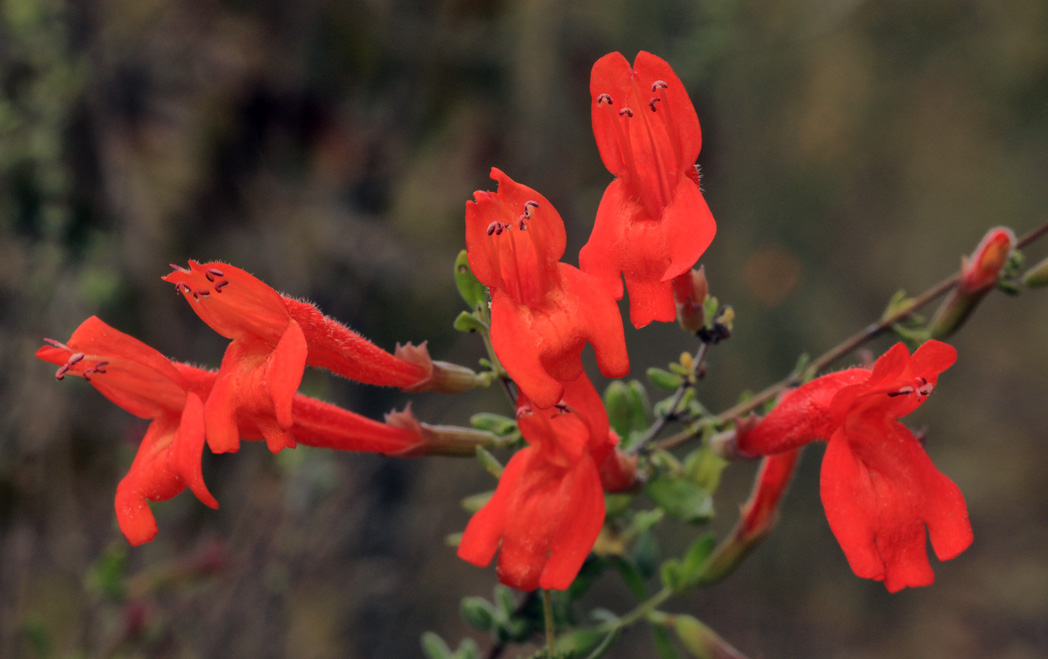Scarlet calamint
Pictured above: Scarlet calamint (Calamintha coccinea) by Alan Cressler, courtesy of Lady Bird Johnson Wildflower Center. Click on terms for botanical definitions. View post as a PDF
Scarlet calamint’s brilliant red flowers offer a dramatic contrast against the backdrop of scrub, sandhill and coastal dunes where the plant naturally occurs. The long, nectar-rich flowers are particularly attractive to hummingbirds and large butterflies. They bloom in abundance in early spring and late fall, but may flower sporadically throughout the year. In peak bloom, a single plant may produce 100 or more flowers. The plant’s leaves emit a minty fragrance when crushed.
Born in the leaf axils, Scarlet calamint’s ruby red flowers are tubular and two-lipped. Lower lips are three-lobed and tend to bend backward. Upper lips are two-lobed and shorter. The floral tube is often covered in fine hairs. Flowers may be solitary or clustered and up to 2 inches long. Leaves are less than ¾ inch long, elliptic to oblanceolate and oppositely arranged. Leaf margins are entire and may roll under. Stems are loosely and multi-branched. Fruit is a small brown nutlet.
Scarlet calamint is known by many common names including Red basil, Scarlet wild basil, Red mint shrub, Red savory and Southern calamint. It is the only Florida native Calamintha species with red flowers, and its flowers are the largest.

Scarlet calamint (Calamintha coccinea) by Alan Cressler, courtesy of Lady Bird Johnson Wildflower Center
Family: Lamiaceae (Mint family)
Native range: Central, western and coastal Panhandle counties, central peninsula
To see where natural populations of Scarlet calamint have been vouchered, visit florida.plantatlas.usf.edu.
Hardiness: Zones 8A–9B
Lifespan: Perennial or Short-lived perennial
Soil: Dry, well-drained sandy soils
Exposure: Full sun to minimal shade
Growth habit: 1–3 feet tall
Propagation: Seed, cuttings
Garden tips:Scarlet calamint can be difficult to establish. It is a picky plant, requiring the precise soil and moisture conditions of its natural habitat. However, it is easy to maintain once established. The plant may be evergreen or deciduous. Annual pruning may be required.
Plants are occasionally available from nurseries that specialize in Florida native plants. Visit www.PlantRealFlorida.org to find a nursery in your area.

